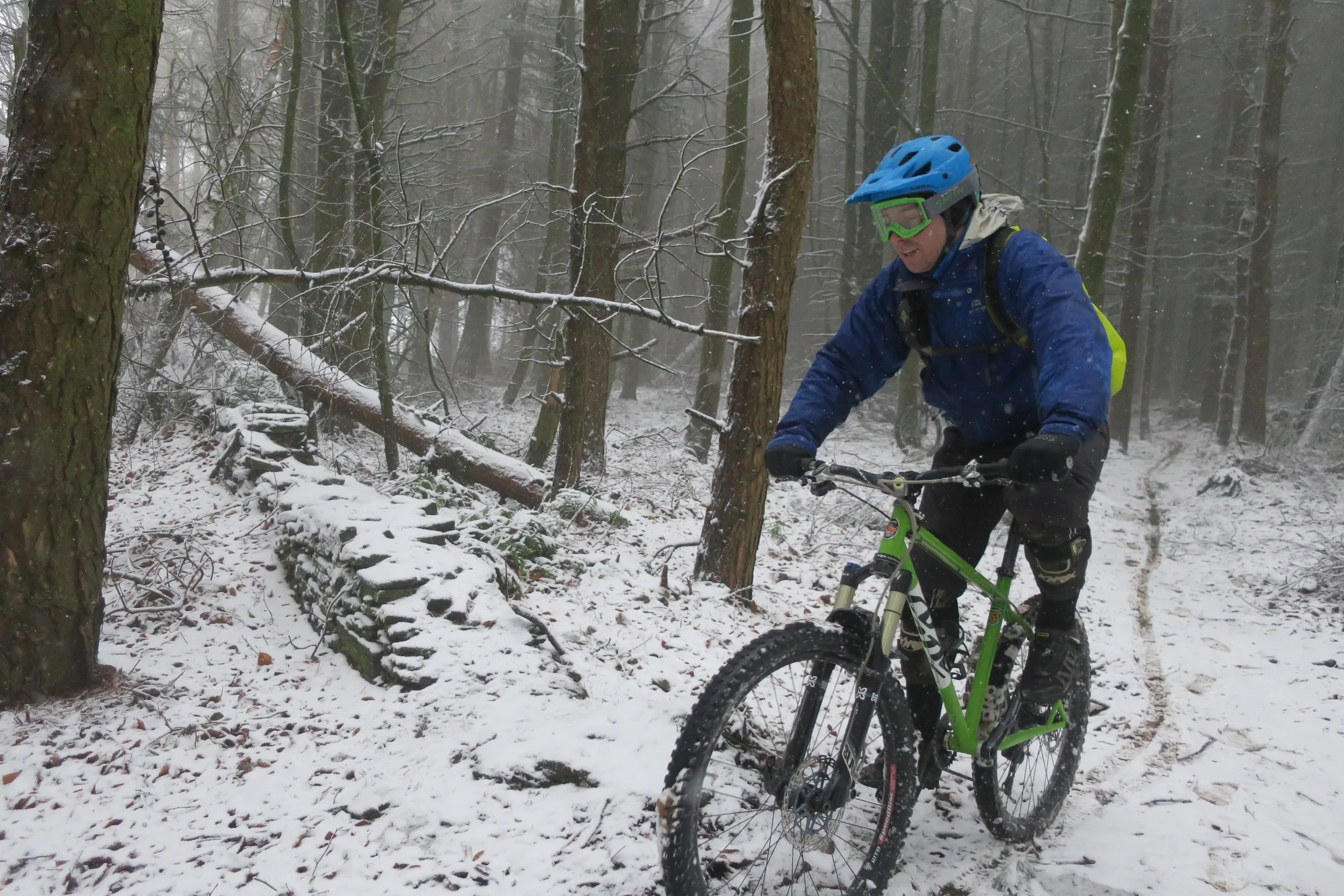Living in the UK and our ever changing weather systems, we can have hot sunny days in the middle of winter and snow in the height of summer.
Choosing what to wear when heading out on the bike can be a puzzling task. Get it wrong and you'll either boil in the bag or spend the whole ride as a shivering wreck.
How to layer and what to wear
The choice of technical materials today, means that gone are the days of the ‘Smelly Helly’.
My go to thermal base layer is the EDZ merino zip neck long sleeve. I chose the zip neck as it allows another degree of venting. Over this I'd have my usual riding jersey.
If it's cold and dry, then I'll wear my Ion soft shell jacket, which is a brilliant piece of kit with lots of stretch in the fabric and a good degree of water repellency. If it's really cold I may wear my Patagonia Nano Air hybrid vest underneath but this is usually if I know I'm going to be doing a lot of standing around, for example when I’m delivering a coaching session.
If it's going to be a cold and wet day, I replace the soft shell with a full on waterproof jacket. I tend to find Mountaineering jackets suit me better than cycling specific ones as they seem to have more room in the arms. Years of bricklaying and bodybuilding have given me Popeye like forearms. I really like my OMM Kamleika jacket as it has 4-way stretch and packs down to next to nothing. It’s aimed at adventure racers and fell runners, so it’s an excellent choice for high energy activities like mountain biking where breathability is important.
On my lower half, I always wear bib shorts. On cold days I will pick a 3/4 length, either my Endura MT 500 with or ones from Gorewear. I then top this off with either my Ion trousers or, if it's going to be a wet ride, a pair of Madison waterproofs. You may also want to consider a pair of knee pads as they have the double benefit of protecting you knees from a fall and also keeping them warm!
I always wear waterproof socks in winter. They help to keep my feet dry and the extra thickness means added warmth ( Sealskinz do a good range or if you time it right, you can pick up a cheaper pair at Aldi supermarkets). One thing to consider is possibly sizing up your normal shoes to fit the extra layering on your feet.
It’s also worth considering a pair of overshoes to keep your feet dry and warm. Whilst they are mainly the domain of those riding clipless pedals, Endura do now offer a pair designed around a flat pedal shoe.
A lot of people I meet say they struggle with cold hands during winter, so here's my advice on keeping your digits warm in the colder months….
The main arteries feeding blood to your fingers are located close to the surface as they pass the wrist, so by keeping this part of your arm warm you stand a chance of having warm fingers. This means that in winter, I wear a pair of Gorewear gauntlet style gloves and tuck the cuff into the sleeve of my jacket. You can also buy neoprene gloves from Gore and Ion (along with our old favourite Aldi supermarket) which I haven't tried, but they would be an excellent choice as this material has great thermal properties.
One thing I would NOT do is add a liner to my usual riding gloves as this could have the effect of restricting blood flow, leading to cold/frozen fingers.
Depending on how cold it is, I will add a neck gaiter and a hat/liner under my helmet. The EDZ merino helmet liner is a great piece of kit.
Finally, I always carry an extra layer in my pack in the form of a lightweight synthetic insulated jacket (something like the Alpkit Heiko), along with a spare pair of gloves and a woolly hat.
So get your layers on, get out and have fun.




